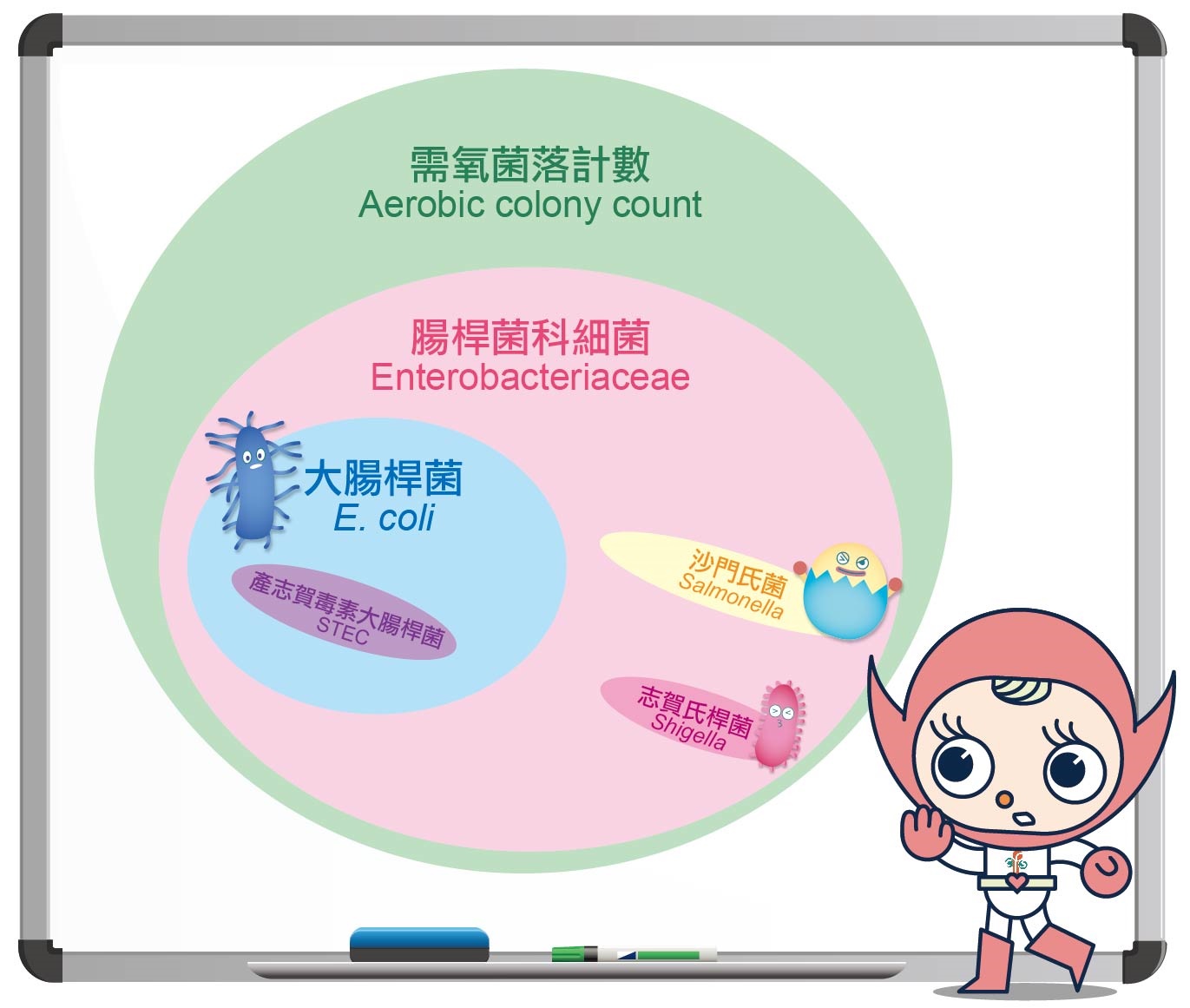
Food Safety Focus (217th Issue, August 2024) – Article 2
Excessive Bacterial Count: Quality, Hygiene or Safety Issues?
Reported by Dr. Ken CHONG, Scientific Officer,
Risk Assessment Section, Centre for Food Safety
Some people may believe that bacterial count is the only factor to determine whether a food is microbiologically safe or not. This is only partially true, as excessive count could suggest potential quality issues of some foods while foods like salad may naturally contain a high bacterial load. The Centre for Food Safety (CFS) has issued the Microbiological Guidelines for Food (the Guidelines), which outlines different microbiological criteria, namely aerobic colony count (ACC), hygiene indicator organisms (HIOs) and specific foodborne pathogens. Foodborne pathogens, like Salmonella, are obviously undesirable in foods and easy to understand, while some people may not be familiar with the roles played by ACC and HIOs. In this article, let us take a closer look at these criteria and their indications.
What is Aerobic Colony Count?
The ACC is a criterion that quantifies the total number of bacteria in a food sample that can proliferate in an aerobic environment at 30°C. This provides an overall measure of the microbial load or quality of the food, similar to total plate count or total bacterial count. No specific information about individual microorganisms and source of contamination can be obtained from the ACC. To find out more about what types of pathogens, if any, are present, specific testing is needed. The bacterial load can vary depending on the different treatments or manipulations the food has undergone. With cooked foods that have undergone further processing such as cooling, chopping or mixing with other ingredients, the bacterial load would likely increase in comparison with that of foods just cooked. Food without cooking, like salad, or with starter culture, such as fermented food, would naturally have high ACC and hence the criterion is not appliable. In the Guidelines, ready-to-eat foods are categorised for ACC assessment. Furthermore, the total bacterial count, such as the standard in the Milk Regulation, can reflect proper heat treatment or handling of milk or milk beverage.
By following good hygiene practices, the ACC can be kept below respective levels. Foods with excessive ACCs often indicate poor sanitation, improper storage temperatures or an extended shelf life, which result in unsatisfactory quality. On the other hand, overall hygienic quality of a food is reflected by HIOs.
What are Hygiene Indicator Organisms?
There are two indicators in the Guidelines, i.e. Escherichia coli and Enterobacteriaceae. E. coli are commonly found in intestines of humans and animals, with most of them harmless and some of them essential to good health. Nevertheless, a few E. coli can cause infection and a specific group called Shiga toxin-producing E. coli (STEC) can cause serious illness. So, the presence of E. coli in a food sample does not necessarily mean the food is unsafe to eat. Only a subset of E. coli is actually pathogenic. In fact, this criterion in food is commonly used for indication of direct or indirect faecal contamination. It is more relevant to personal hygiene, such as improper hand washing. That a sashimi sample was found to contain excessive E. coli was possibly due to unhygienic handling.
Enterobacteriaceae are a large family of biochemically and genetically related bacteria that includes E. coli as well as some pathogens (See illustration). They are easily killed by proper cleaning and sanitisation, hence suitable for assessment of general hygiene status of a food product. Their presence in heat treated food indicates inadequate cooking or post-processing contamination. Enterobacteriaceae testing casts a wider net and indicates general sanitation problems, providing an early warning for contamination.
Is the Food still Safe if these Criteria are Exceeded?
While high levels of ACC and HIOs can signal potential problems for general ready-to-eat food, they do not necessarily mean the food is unsafe or unfit for consumption. The ACC is a broad quality indicator and HIOs indicates the hygiene status. Exceeding guidance levels for ACC or HIOs does not directly lead to a food being considered as unsafe, but it does prompt further investigation, increased monitoring and corrective actions. Investigative food samples can be considered to see if the problem persists.
On the other hand, these criteria have to be interpreted in the context of the food type as stated in the Guidelines. For example, shelf-stable canned or bottled food products are normally sterile when sampled from containers and the detection of ACC, albeit at low levels, would require immediate follow-up actions. Furthermore, in the Guidelines, there are criteria for specific food items, such as E. coli in bivalve molluscs intended for raw consumption, in which excessive count would indicate possible contamination at source and potential health risks.

Figure2: Relationships between selected criteria and pathogens







